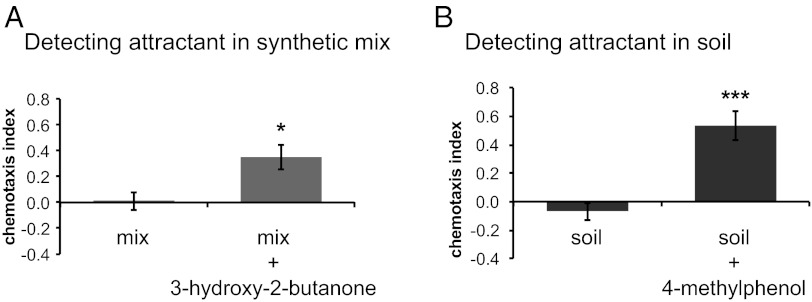Fig. 7.
EPNs detect and respond to host-derived odorants in the presence of complex odor mixtures. (A) Response of S. scapterisci IJs to a 10−1 dilution of the cricket-derived odorant 3-hydroxy-2-butanone in the presence of a synthetic mix containing 10−1 dilutions of hexanal, γ-terpinene, and p-dichlorobenzene. The left bar represents the response to the synthetic mix vs. a paraffin oil control. The right bar represents response to the synthetic mix vs. the synthetic mix with 3-hydroxy-2-butanone added. n = 6–9 trials for each condition. The response to the synthetic mix with 3-hydroxy-2-butanone added was significantly different from the response to the synthetic mix alone (P < 0.05, unpaired t test). (B) Response of S. carpocapsae IJs to 4-methylphenol in the presence of soil odor. The left bar represents the response to soil odor vs. an air control. The right bar represents response to 4-methylphenol plus soil odor vs. soil odor alone. n = 6 trials for each condition. The response to 4-methylphenol plus soil odor was significantly different from the response to soil odor alone (P < 0.001, unpaired t test). In addition, the response to 4-methylphenol in the presence of soil odor was not significantly different from the response to 4-methylphenol in the absence of soil odor (unpaired t test). Mean, n, and SEM values for each assay are given in Dataset S10.

